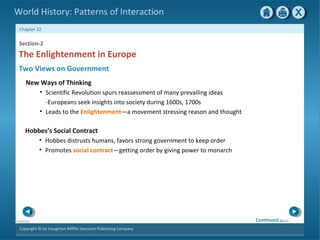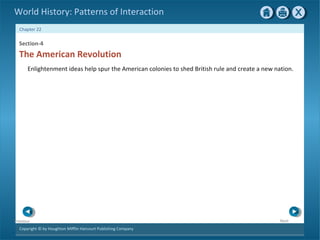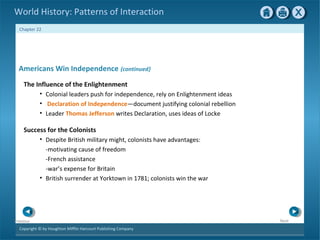This document provides an overview of Chapter 22 which discusses the Scientific Revolution, Enlightenment, and American Revolution between 1550-1789. It includes sections on the Scientific Revolution which questioned accepted beliefs and developed the scientific method. The Enlightenment in Europe section describes how new ways of thinking led to views favoring reason and natural rights. The Enlightenment spreads section notes how Enlightenment ideas influenced art, music, literature and some monarchs adopted Enlightenment values.





























